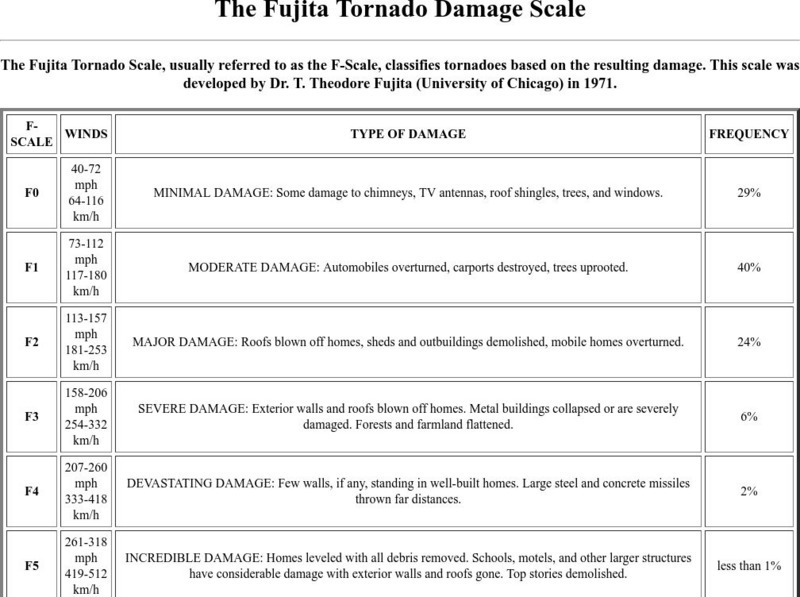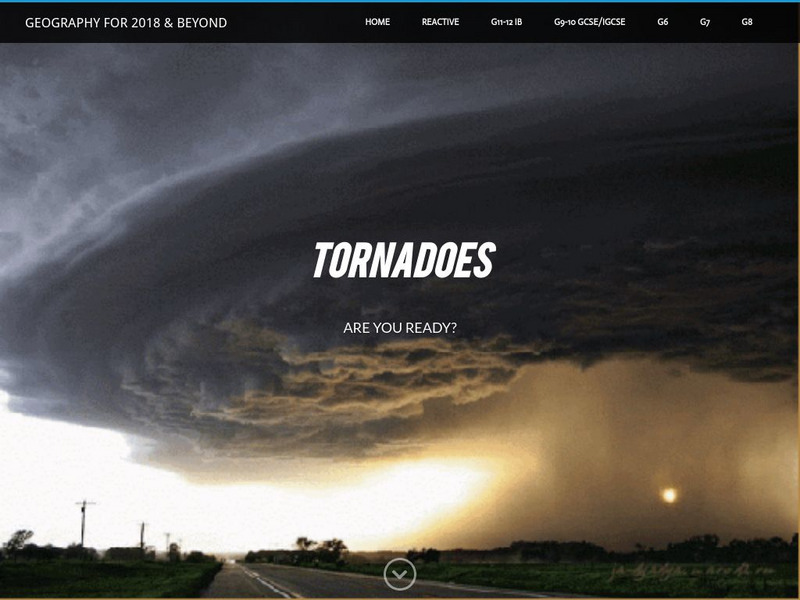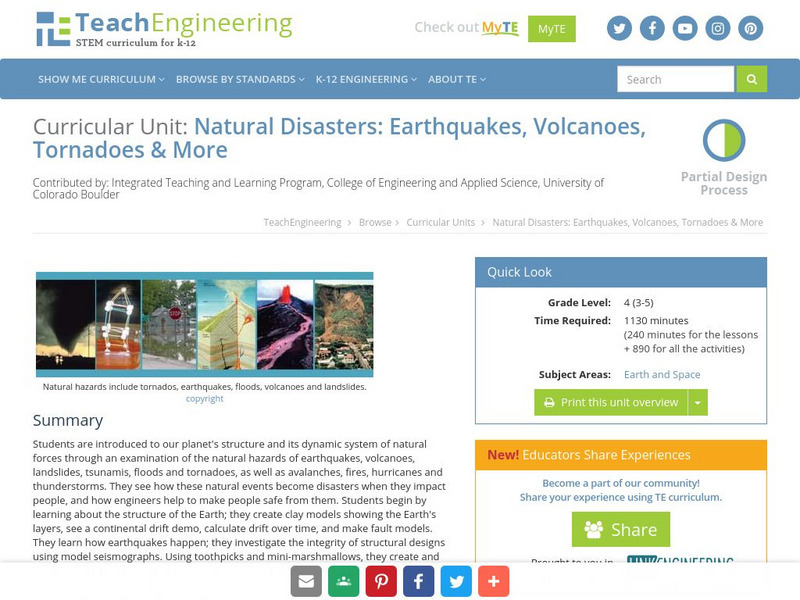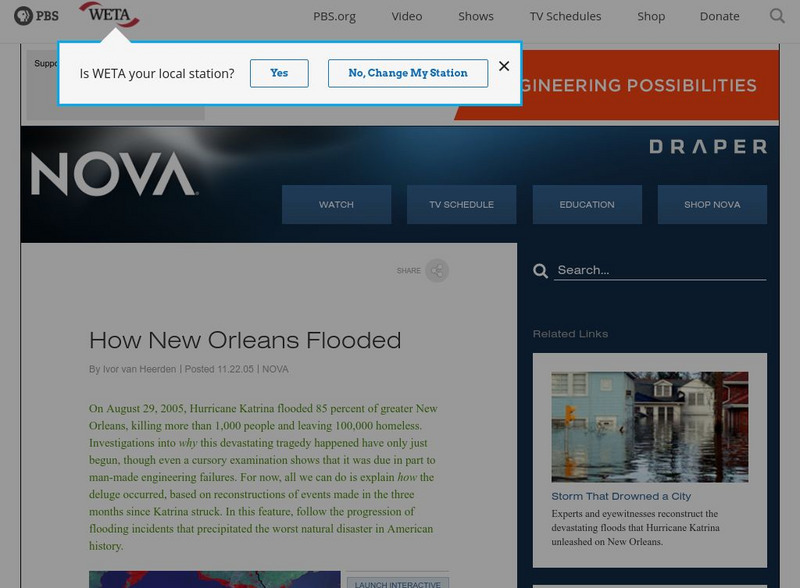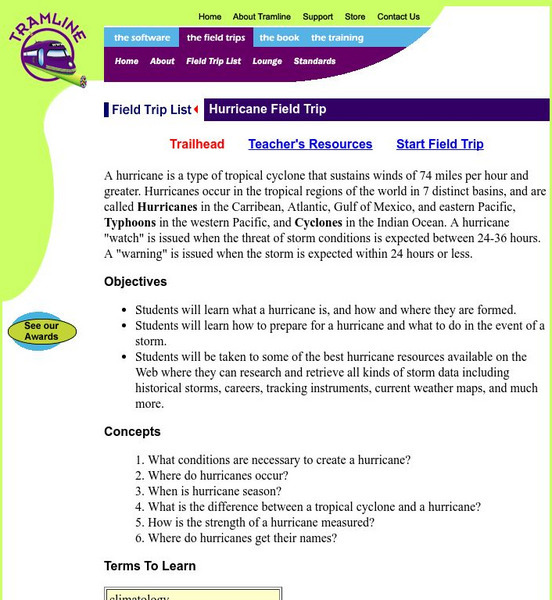PBS
Pbs Learning Media: Rate Tornado Damage
In this interactive activity from NOVA Online, use the Fujita tornado intensity scale to assess the level of destruction left in the wake of actual tornadoes.
National Weather Service
National Weather Service: Weather Fatality, Injury and Damage Statistics
Web site that contains detailed statistics involving natural disasters by year and type of disaster. Statistics are available in .pdf format.
University Corporation for Atmospheric Research
Ucar: Winter Storms
If you're looking for blizzard and other snow storm information, this site's worth investigating. Find out what conditions form blizzards as well as the damage they cause.
University of Wisconsin
Uw Madison: The Fujita Tornado Damage Scale
Here is a simple chart explaining the levels of tornado damage on the Fujita scale.
Independence Hall Association
U.s. History: Operation Desert Storm
A brief overview of Operation Desert Storm, the preceding events, and the outcome.
Other
Bom: Severe Thunderstorms in Australia
In less than one hour in South Wales, Australia a thunderstorm caused 1.5 billion dollars in damage. Read about it!
Other
K 3 Learning Pages: Web Resources Thunderstorms
Check out this comprehensive list of web resources on thunderstorms and safety. Students and teachers will benefit from the links found on this site.
Other
Chase Day: Hail and Hail Storms
Page provides four links to hailstones, hail fall, hailstorms and punching. Also includes a picture of large hail and more links for further information.
NOAA
Noaa: National Severe Storms Laboratory: Tornadoes
Find out how tornadoes occur, how they are predicted, the smallest size, the largest size, and how they are detected.
Geographypods
Geographypods: Tornadoes
This learning module looks at how and where tornadoes form, the damage they do, the loss of human lives, the cost, safety measures, what to do when a tornado is approaching, famous tornadoes, the practice of storm chasing, and how...
TeachEngineering
Teach Engineering: Natural Disasters
Students are introduced to our planet's structure and its dynamic system of natural forces through an examination of the natural hazards of earthquakes, volcanoes, landslides, tsunamis, floods and tornados, as well as avalanches, fires,...
PBS
Nova: How New Orleans Flooded
View some before and after pictures of New Orleans to get an idea of the flood damage caused by Hurricane Katrina.
University Corporation for Atmospheric Research
Ucar: Hurricanes Impact Our Lives
Web weather site for kids highlights hurricanes. Discover how they are formed, the damage they can cause as well as read a weather story about surviving a hurricane.
Tramline
Hurricane Virtual Field Trip
What conditions are necessary to create a hurricane? Where do hurricanes occur? When is hurricane season? What is the difference between a tropical cyclone and a hurricane? How is the strength of a hurricane measured? Where do hurricanes...
A&E Television
History.com: Hurricane Katrina
Early in the morning on August 29, 2005, Hurricane Katrina struck the Gulf Coast of the United States. While the storm itself did a great deal of damage, its aftermath was catastrophic Levee breaches led to massive flooding, the federal...
NOAA
Noaa: Nhc:deadliest Atlantic Tropical Cyclones, 1492 Present
The National Hurricane Center site contains a large body of information on hurricanes. From this site find out what a storm surge is, when the first record of a tropical storm was made. Go to the home page and find the latest forecasts.
Science Struck
Science Struck: Famous Hurricanes of the World
Describes famous hurricanes that have struck in the Northern Hemisphere since 1900, the regions affected, the intensity of the storms, and the extent of damage each caused. The hurricanes are organized in sequential order.
BBC
Bbc: Hurricane Ike Barrels Over Cuba
This article discusses the damage inflicted on Cuba by Hurricane Ike. Links to related articles are featured. (September 10, 2008)
Science Struck
Science Struck: Interesting Facts About Hurricanes
An ebook (with some embedded ads) that describes the characteristics and behavior of hurricanes, which are really the same phenomenon as typhoons and cyclones, and the damage caused by them.
Science Struck
Science Struck: Facts About Hurricane Andrew
A description of Hurricane Andrew, a Category 5 storm that struck South Florida in 1992 before hitting Louisiana as a Category 3. Looks at the massive damage to life and property and provides a list of facts about the hurricane.
Science Struck
Science Struck: Causes and Effects of Hurricanes
Discusses the causes of hurricanes and their effects on a region, including storm surges, heavy winds, precipitation, and possible tornadoes.
Science Struck
Science Struck: Facts About Hurricane Rita
Describes the impact of Hurricane Rita which struck Texas and Louisiana soon after Hurricane Katrina left. Many of the resulting deaths were due to an uncoordinated evacuation and poor storm preparations.
Other
Rita and Katrina: How Hurricanes Compare [Pdf]
Interesting map with information comparing Hurricanes Rita and Katrina.
University Corporation for Atmospheric Research
Ucar: Thunderstorms
Informational weather site provides users with an abundance of weather information. Discover what thunderstorms are, where they occur the most frequently and the damage they can cause.



